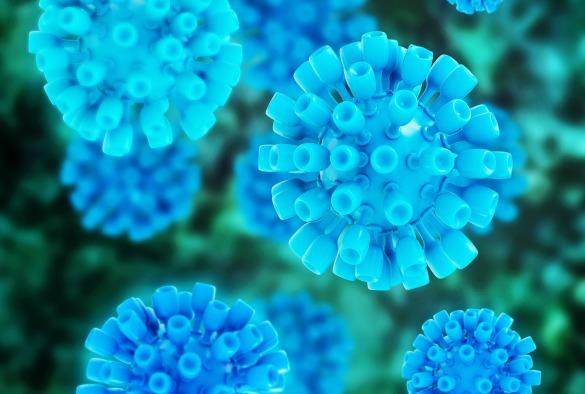Studies confirm link between child hepatitis and common childhood virus AAV2

Two new studies published today (30 March 2023) in Nature have found that the rise in unexplained hepatitis cases among children since 2022 is linked to a common childhood virus known as adeno-associated virus 2 (AAV2).
The studies, involving University of Liverpool researchers via the ISARIC4C consortium, are part of a UK-wide collaboration to confirm and strengthen our understanding of this excess of acute severe hepatitis in children and are the first peer-reviewed examples of an AAV being directly implicated in disease.
Since April 2022, a number of young children worldwide have developed jaundice and acute severe hepatitis of unknown origin. While the outbreak has now largely subsided, the World Health Organisation estimates there have been at least 1010 probable cases in 35 countries, and sporadic cases continue to occur. Children with the condition often had to be admitted to hospital for a number of days. In the UK the majority of the 270 cases were under the age of five years old, with many requiring admission to intensive care and 15 children required liver transplants as a result of their condition. This virus is known to replicate in the liver, but not previously known to cause hepatitis and cannot replicate without a ‘helper’ virus.
The studies were led by researchers at the University of Glasgow and the Royal Hospital for Children in Glasgow, Public Health Scotland (PHS) and Great Ormond Street Hospital and University College London – in collaboration with ISARIC (International Severe Acute Respiratory and emerging Infections Consortium) which is co-led by the University of Liverpool’s Professor Calum Semple.
The Glasgow-based study detected AAV2 in 26 out of 32 (81%) cases of hepatitis, versus in 5 out of 74 (7%) control individuals; the second team detected AAV2 in 27 out of 28 (96.4%) cases of hepatitis, and low rates in control individuals. The researchers found an association between host genetics and cases of hepatitis: approximately 93% of the affected children carried a particular gene variant for human leukocyte antigen (a molecule that helps the immune system to recognize infected cells), compared with around 16% of the control group — a finding that suggests some children may be genetically more susceptible to some forms of hepatitis.
The London-based study, which investigated 38 cases of hepatitis, also detected low levels of human adenovirus and human betaherpesvirus 6B (HHV-6B), and suggest that these viruses might enable AAV2 replication, and potentially contribute to the severity of immune-mediated liver damage. In addition, the researchers compared liver tissue from cases and healthy controls and showed strong evidence of an immune mediated process in patients with hepatitis.
These findings follow two UK pre-prints of smaller studies of preliminary data published in July 2022, which were led independently and simultaneously and made the first link between AAV2 and acute hepatitis in children. At that time, researchers across the two teams found that AAV2 was present in 96% of cases of unknown hepatitis examined across both studies, and as a result they suggested it may offer the best explanation for the onset of hepatitis in affected children.
Now, with more patients, samples and controls, these updated and externally peer-reviewed studies – the first of their kind in the world – offers important new data which strongly suggests that infection with AAV2 and an underlying genetic association (the HLA DRB1*04:01 gene) were associated with the onset of acute hepatitis in children.
Professor Calum Semple, Professor of Outbreak Medicine and Child Health at the University of Liverpool and Co-lead of ISARIC said: “This discovery was made remarkably quickly using a new way of working between the NHS, public health and academia. Effective and timely collaboration has identified the cause of this disease and reassured us that it is not caused by coronavirus or vaccination.”
This research was funded in part by the National Institute for Health and Care Research (CO-CIN-01) or jointly by NIHR and UK Research and Innovation (CV220-169, MC_PC_19059). The views expressed in this article are those of the author(s) and not necessarily those of UKRI, the NIHR, or the Department of Health and Social Care.